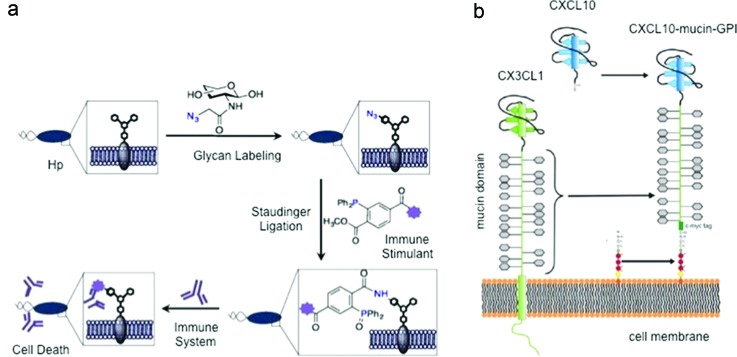Fig. 8.
Cell surface engineering. (a) The glycans of H. pylori are selectively labeled with azide-containing sugar. The azide undergoes Staudinger ligation with an immune stimulant. This surface modification enables the immune system to trigger a response resulting in H. pylori death. Reprinted with permission from Kaewsapsak et al., ChemBioChem 14, 721 (2013). Copyright 2013, Wiley. (b) Mucin domain of CXC3CL1 was combined with a glycosylphosphatidylinositol anchor and integrated into the cell membranes of Chinese hamster ovary and endothelial cells. The CXCL10 chemokine head enabled the recruitment of leukocytes to the tumor microenvironment. Reprinted from Ref. 135: Muenchmeier et al., PLoS One 8, e72749 (2013).

